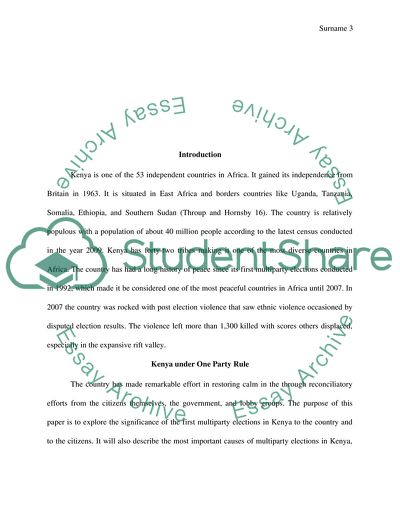Cite this document
(First Multiparty Elections in Kenya Case Study Example | Topics and Well Written Essays - 2000 words, n.d.)
First Multiparty Elections in Kenya Case Study Example | Topics and Well Written Essays - 2000 words. Retrieved from https://studentshare.org/politics/1785088-identify-one-major-political-event-in-an-african-country
First Multiparty Elections in Kenya Case Study Example | Topics and Well Written Essays - 2000 words. Retrieved from https://studentshare.org/politics/1785088-identify-one-major-political-event-in-an-african-country
(First Multiparty Elections in Kenya Case Study Example | Topics and Well Written Essays - 2000 Words)
First Multiparty Elections in Kenya Case Study Example | Topics and Well Written Essays - 2000 Words. https://studentshare.org/politics/1785088-identify-one-major-political-event-in-an-african-country.
First Multiparty Elections in Kenya Case Study Example | Topics and Well Written Essays - 2000 Words. https://studentshare.org/politics/1785088-identify-one-major-political-event-in-an-african-country.
“First Multiparty Elections in Kenya Case Study Example | Topics and Well Written Essays - 2000 Words”. https://studentshare.org/politics/1785088-identify-one-major-political-event-in-an-african-country.


